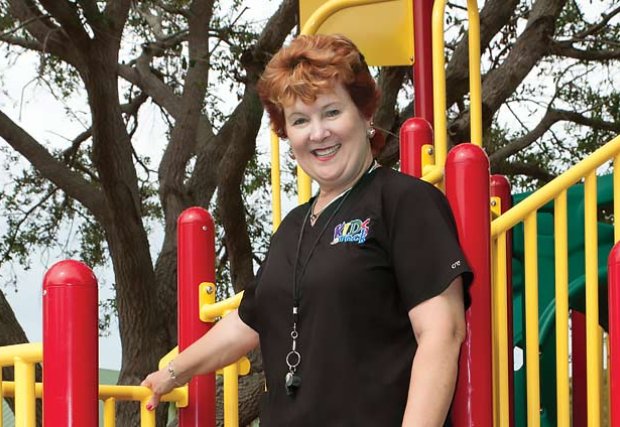Toni Walter is thankful for a new, non-narcotic solution for post-operative pain.
Toni Walter, 60, a full-time caregiver, had her first hip replacement surgery four years ago at Lakewood Ranch Medical Center by Orthopaedic Surgeon David Cashen, MD, Medical Director of the Orthopaedic Spine and Joint Center. While completing her post-surgery recovery, which included three months of physical therapy, Walter continued with a pain management plan that included taking prescription pain medication, despite some of the adverse effects she experienced from taking the narcotics. Walter says within six hours after surgery, nurses had her standing up, and before she knew it, she was vomiting. “I was not a good candidate for opioids, so Dr. Cashen gave me a substitute for it, which made me a little less nauseous,” says Walter. “But I still had to keep crackers and lemon-lime soda by my bed to keep the nausea at bay.”
“I knew I would have to have my other hip done because my condition was hereditary, so I was hoping there would be a different pain relief option by that time,” says Walter. Luckily, there was.
About two years later when it was time for Walter’s other hip replacement, Dr. Cashen suggested using a new, non-opioid pain management treatment and Walter agreed. She was the first hip replacement patient at Lakewood Ranch Medical Center to receive the new treatment. “The nurses stood me up soon after surgery, and I had no problems with nausea, nor did I have much pain. I didn’t even finish my prescription pain medications, and my rehab was only two months. I can’t believe what a difference it was with the new pain treatment,” she says.
“I had both surgeries with Dr. Cashen at Lakewood Ranch, and I would have them there again. The hospital staff was courteous, caring, professional, and I felt like I was in a resort. Dr. Cashen was amazing and has a great bedside manner,” says Walter. “Thanks to him, I was able to get back to my work as a caregiver, and I have no more pain.”
Learn more about joint replacement at Lakewood Ranch Medical Center >
How Does Opioid-Free Pain Medication Work?
Orthopaedic Surgeon David Cashen, MD, Medical Director of the Orthopaedic Spine and Joint Center, explains the non-narcotic medication is a long-acting local anesthetic that works by numbing pain sensory nerves at the surgical site, much like a dentist numbs a patient's mouth. It’s packaged in microscopic bubble-like structures that burst randomly over a three-day period, providing continuous pain relief. By experiencing less pain, patients don’t need to take as much narcotic pain medication. “This pain management modality allows me to provide hip and knee replacement surgery with less pain,” says Dr. Cashen. “We add spinal anesthesia, peripheral nerve blocks and non-narcotic medications to create a more manageable post-surgical experience. Patients are more active, more comfortable and more likely to return home early with better outcomes.”


